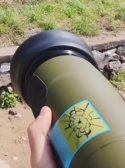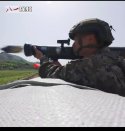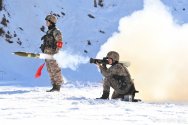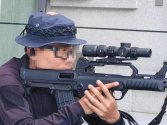You are using an out of date browser. It may not display this or other websites correctly.
You should upgrade or use an alternative browser.
You should upgrade or use an alternative browser.
PLA Small arms
- Thread starter Vanguard1688
- Start date
If memory serve the charging handle on it should be interchangeable to both left and right since there are cutout for it on both sides.Damn, left-side charging handle for the QCQ171? I thought they ditched those long ago.
That seems to only work when the handguard for it allows that. Cuz the default one only uses the right side charging handle.If memory serve the charging handle on it should be interchangeable to both left and right since there are cutout for it on both sides.
All the picture of this gun I see has cutout for bothside maybe there is a version without the leftside cutout I havent seen before.That seems to only work when the handguard for it allows that. Cuz the default one only uses the right side charging handle.
Edit: with a quick search it seems like majority of this smg in service are equipped with a handguard without the leftside cut out and no top rail on the handguard.
As by78 noted that you are former PAP, just out of curiocity, is this holding barral thing introduced by instructors (regulations) or choice/practice by individuals? I went to the army for mandatory training in my school years, the only thing I was told and strictly followed was to hold the end of the forestock near the magazine or at the joint of the forestock and the magazine. I remember not only how to hold a rifle but how to carry it and changing magazine etc. were strictly regulated. So this holding furthest away from the body must be a new thing. I am quite confused that for nearly 100 years of PLA's history and millions soldiers in real war they didn't figure out this advantage, but only very recently. I am also curious if Chinese military has gone so relaxed since 1980/1990 in tactical rules/docrines that eveyone can do anything they see fancy?Because this method allows us to control the gun more easily while shooting, when we use this stance we only rapidly fire 3-5 rounds and then switch to handgun shooting. We wouldn’t be foolish enough to keep firing continuously until the barrel gets too hot; most of the time, we adopt this stance just for taking photos rather than for actual shooting.
Last edited:
I think it's called the C-clamp grip. I only started hearing it beginning of the last decade, and it became quite popular pretty quickly. I've seen a lot of tier one units using it as well, and soon everyone and YouTubers started doing it. Supposedly, it gives you better control and comfort when aiming, and it also feels more natural. The only downside I've heard is that it makes your arms more tired while holding that form. It seems to be pretty common these days from what I can see.As by78 noted that you are former PAP, just out of curiocity, is this holding barral thing introduced by instructors (regulations) or choice/practice by individuals? I went to the army for mandatory training in my school years, the only thing I was told and strictly followed was to hold the end of the forestock near the magazine or at the joint of the forestock and the magazine. I remember not only how to hold a rifle but how to carry it and changing magazine etc. were strictly regulated. So this holding furthest away from the body must be a new thing. I am quite confused that for nearly 100 years of PLA's history and millions soldiers in real war they didn't figure out this advantage, but only very recently. I am also curious if Chinese military has gone so relaxed since 1980/1990 in tactical rules/docrines that eveyone can do anything they see fancy?
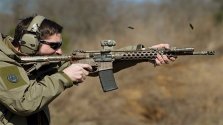
You don't c-clamp the barrelI think it's called the C-clamp grip. I only started hearing it beginning of the last decade, and it became quite popular pretty quickly. I've seen a lot of tier one units using it as well, and soon everyone and YouTubers started doing it. Supposedly, it gives you better control and comfort when aiming, and it also feels more natural. The only downside I've heard is that it makes your arms more tired while holding that form. It seems to be pretty common these days from what I can see.
View attachment 151163
Yup, most learn this after firing a few rounds and burning their fingers.You don't c-clamp the barrel
I believe not.The projectile is not really same and there's an interesting sticker on the tube.I really wonder what does that mean.The video showed the explosion of projectile,it doesn't seems like a smoke or fuel air explosive weapon.Looks like the standard 80mm rocket launcher?
View attachment 150985
